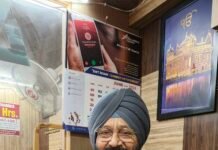Komori India is organizing packaging seminars across India in partnership with its experts from Komori Japan. The first seminar took place in New Delhi on 25 May 2019 and included speakers from Komori Japan, Seigwerk and Clix Capital.

Sangam Khanna, deputy managing director of Komori India, explained that the objective of the seminars is to offer value-added solutions from Komori and a 360 degree solution for visitors. The first presentation by Takanobu Aoki, a technical expert in charge of global sales promotion at Komori Japan, introduced Komori’s Lithrone G series of multicolor offset presses. He highlighted the features of the GL 37, GL 637 with coater and GL 640 with coater presses. Speaking of the space, cost, and energy saving advantages of the presses, he also mentioned the KHS-AI smart integrated print quality control systems to improve productivity for printing companies.
He also talked about the PDC-SX, which adds an automatic registration function to the color control function so that both color and register are measured in one process and the information is automatically fed back to the press. The presentation ended with a brief introduction to KP connect, a system to identify print production issues and streamlining print production.
Akihiro Inde, in-charge of global sales and the application specialist from Komori, discussed the Komori H-UV and H-UV L (LED) curing systems. These are UV curing systems that use an H-UV lamp and high-sensitivity UV ink for high print quality and instant curing with reliability as well as excellent economic and eco-friendly performance. H-UVL further reduces power consumption and enables instant on/off of the LED lamp.
Inde mentioned that Komori has sold over 1000 of these systems across the globe. He displayed numerous samples of packaging and printed materials during his presentation to help the audience understand the application of the system. Yuichi Nakamura, sales manager of exports at Komori, explained how to define the cost of ownership. Nakamura discussed the ROI (Return of Investment) concept as well.
Jatin Takkar, manager of product safety and regulatory at Siegwerk, discussed packaging inks and food safety, the regulatory framework of FSSAI, and the risk of migration of optimized inks from packaging to the product during his presentation. Educating the audience about some of the less known FSSAI guidelines and food grade inks, Takkar recalled the Nestlé baby milk scandal in 1970s, when traces of packaging ink were found in the product, in order to make the audience aware that it is the packaging manufacturer’s responsibility to produce safe packaging for brand owners. The final presentation by the Clix Capital team on leasing and finances stirred up a stimulating debate among the audience that enquired about the possibility of acquiring presses on the subscription model as well. The evening concluded with a networking session and dinner.











